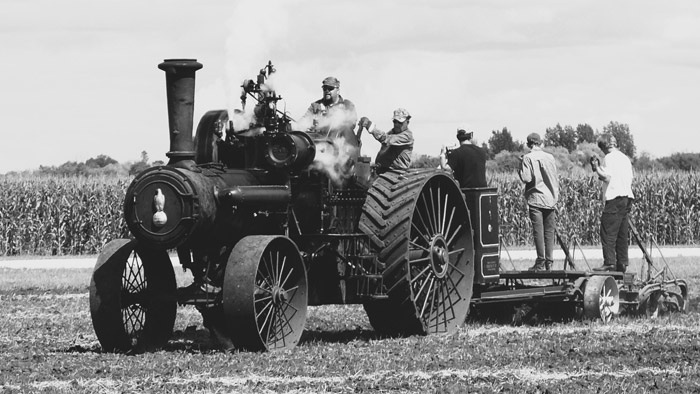The Mennonite experience in Manitoba during the late 19th and early 20th centuries is a story of resilience, change, and cultural adaptation, detailing the community’s transformative journey in a new land. Settling in this unfamiliar territory, Mennonite communities encountered both external pressures from modernization and internal challenges that reshaped their traditions and way of life.
At the heart of these changes were the forces of economic prosperity, shifts in farming practices, modifications in governance, and the inevitable evolution that came with the passing of generations. From the very beginning, tensions emerged between the traditional collective authority of Mennonite communities and the growing individual ambitions of landowners. The economic success that many farmers achieved, bolstered by bountiful harvests, often prompted a move away from the communal, village-centered way of life. Instead, isolated quarter-section farms became the norm, leading to the gradual fragmentation of the tightly-knit social fabric that once characterized Mennonite society. The shared resources and collective decision-making that had been hallmarks of their community life started to erode, making way for a more individualistic approach.
The first 15 years of Mennonite settlement in Manitoba marked profound and subtle transformations in agricultural practices. Traditional oxen-powered farming methods gave way to the use of horses, and manual labor began to be replaced by emerging mechanization. Mennonite farmers transitioned from subsistence farming to commercial grain and dairy production. Their integration into the growing agricultural economy reflected a broader shift in priorities and practices. However, this process was not without its challenges. Within six years of their initial settlement, about half of the Mennonite population in the East Reserve migrated to the West Reserve, rendering many East Reserve villages unsustainable.
By 1880, local governance underwent a significant shift as provincial municipalities replaced village councils, marking the end of an era in which Mennonite communities exercised considerable autonomy in managing their internal affairs. Larger villages, once centers of communal decision-making, began to transform into service hubs, hosting stores, mills, and post offices. The arrival of railways had a profound impact, facilitating the export of grain on an expanding scale and connecting Mennonite communities to the wider world. These developments, once unimaginable in their isolated villages, opened up new opportunities and challenges. By the 1920s, towns like Steinbach emerged as thriving economic centers, bustling with businesses and entrepreneurial activity.
However, with prosperity came unease. The Kleine Gemeinde leadership, in particular, worried that this economic success might lead to materialism and moral decline. The struggle to balance economic growth with spiritual values became a recurring theme in the community’s history.
The social and cultural shifts were equally significant. By 1877, the East and West Reserves had developed meeting houses and schools in each village. Over time, renewal movements gave rise to new churches, including the Church of God in Christ, the Bergthaler church, the Sommerfelder church, and the Mennonite Brethren Church. Education also became a cornerstone of Mennonite life, evidenced by the establishment of Manitoba’s first Mennonite secondary school in 1889. These institutions not only catered to their community’s immediate needs but also facilitated a broader engagement with their new environment.
As time passed, the generational shift brought about even more profound changes. The first generation of settlers, who carried with them vivid memories of life in Imperial Russia, gradually passed on. Without their direct influence, younger Mennonites were further distanced from their ancestral past, accelerating their adaptation to Canadian society. This younger generation, lacking the living connection to their heritage, was compelled to shape an identity that was both reflective of their unique heritage and responsive to the demands of a modern world.
In essence, the Mennonite experience in Manitoba during this period is a story of negotiation – between tradition and change, isolation and integration, spiritual values and material success. It underscores the resilience of a community navigating the delicate balance between preserving their cultural identity and embracing the opportunities of their new environment.




